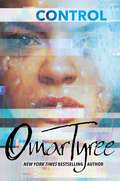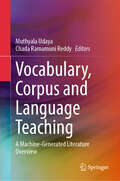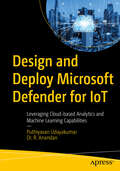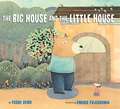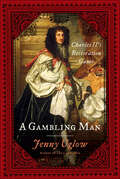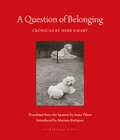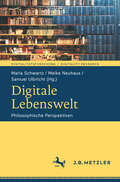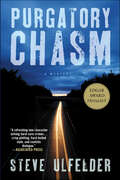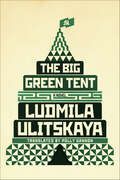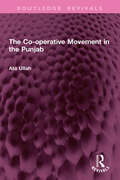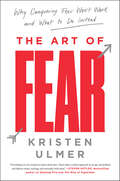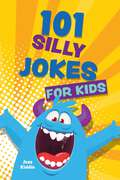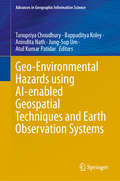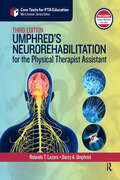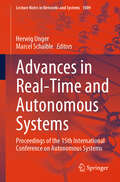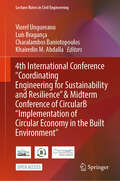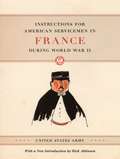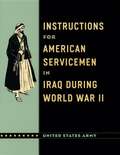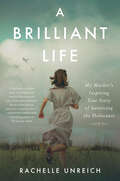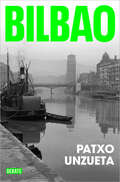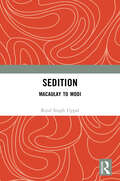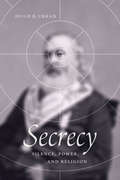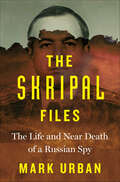- Table View
- List View
Control
by Omar TyreeSix talented but dangerously toxic personalities in the entertainment hotbed of Atlanta push their psychologist to her own vulnerable limits – and maybe beyond – in this enthralling, knife-edged thriller from NAACP Image Award-winning author Omar Tyree. Dr. Victoria Benning knows it&’s unethical to discuss the therapy sessions of her clients, but the drama of their unpredictable lives tests her professional role like never before. First, she counsels Mrs. Melody, a brutally honest, gorgeous rap artist who relies on sexual leverage with men to elevate her music career. Then there&’s Charles Clay, a hot young film director and master manipulator with a fetish for opportunistic women. Tyrell Hodge is a frustrated screenwriter, part-time driver, and full-time complainer who desperately needs a break. Dark & Moody is a music producer who prays for a blood sacrifice in order to succeed. Joseph Drake, a venture capitalist from a powerful, slave-ownership family, now suffers from a spell of White guilt. And Destiny Flowers is a hopeless dreamer who struggles to keep her mouth and mind at peace—while harassing the tolerant doctor she hopes will ultimately help her. Working around the clock, Dr. Benning observes a troubling, treacherous common denominator that plagues all six clients: a desperate impulse to grasp control of everything and everyone in their lives—no matter the cost. It&’s a struggle with which she&’s all too familiar. Determined to head-off tragedy, she comes up with a brilliant game plan to make their collective talents work in everyone&’s favor. . . But just as she moves into action, inexplicable events quickly turn fatal, as the doctor finds her plan, her career, and her personal life all spiraling into madness—and hopelessly out of control.
My Lucky Dog
by Mellon TytellHunter, my majestic eighty-six-pound mutt, was the love of my life for thirteen years. I was addicted to looking at him—every twitch of his ear was fascinating to me. I've taken thousands of photographs of him, dozens even in the same position. He was "my lucky dog."I adopted Hunter when he was two. He came with that name, his former owner a fan of Hunter S. Thompson. I noticed Hunter's photo in the window of a pet store in Vermont and brought him home.If I was the lucky break in his life, he was the transforming experience in mine. Before, I was a little wild. As a photographer, I traveled around the world, picking up and leaving on a dime. Life was exciting: photo shoots in Paris, Haiti, the Himalayas, the Andes, and even the Amazon.Hunter tamed me. I couldn't be away from him for more than five hours at a time. I had no children of my own; Hunter taught me about responsibility, love, and devotion in a way that was inaccessible to me with "people."—Mellon
Vocabulary, Corpus and Language Teaching: A Machine-Generated Literature Overview
by Muthyala Udaya Chada Ramamuni ReddyThis book is the result of a collaboration between a human editor and an artificial intelligence algorithm to create a machine-generated literature overview of research articles analyzing the importance of ESL/EFL vocabulary and corpus studies. It is a new publication format in which state-of-the-art computer algorithms are applied to select the most relevant articles published in Springer Nature journals and create machine-generated literature reviews by arranging the selected articles in a topical order and creating short summaries of these articles.This comprehensive book explores ESL/EFL vocabulary and corpus studies from five main perspectives: acquisition, strategies, ICT, corpus, and current practices. The sections delve into topics such as the impact of technology on learning, the power of corpora in language education, and innovative vocabulary-development techniques.This book is an essential resource for researchers, educators, and language facilitators seeking a deeper understanding of vocabulary within ESL/EFL teaching and learning contexts.
Design and Deploy Microsoft Defender for IoT: Leveraging Cloud-based Analytics and Machine Learning Capabilities
by Puthiyavan Udayakumar Dr. R. AnandanMicrosoft Defender for IoT helps organizations identify and respond to threats aimed at IoT devices, increasingly becoming targets for cyberattacks. This book discusses planning, deploying, and managing your Defender for IoT system. The book is a comprehensive guide to IoT security, addressing the challenges and best practices for securing IoT ecosystems.The book starts with an introduction and overview of IoT in Azure. It then discusses IoT architecture and gives you an overview of Microsoft Defender. You also will learn how to plan and work with Microsoft Defender for IoT, followed by deploying OT Monitoring. You will go through air-gapped OT sensor management and enterprise IoT monitoring. You also will learn how to manage and monitor your Defender for IoT systems with network alerts and data. After reading this book, you will be able to enhance your skills with a broader understanding of IoT and Microsoft Defender for IoT-integrated best practices to design, deploy, and manage a secure enterprise IoT environment using Azure.What You Will LearnUnderstand Microsoft security services for IoTGet started with Microsoft Defender for IoTPlan and design a security operations strategy for the IoT environmentDeploy security operations for the IoT environmentManage and monitor your Defender for IoT SystemWho This Book Is ForCybersecurity architects and IoT engineers
The Big House and the Little House
by Yoshi UenoLittle Mouse and Big Bear live on opposite ends of the same road, and they both would like a friend. But every morning, Little Mouse and Big Bear pass by each other, unnoticed. Until one day, their eyes meet!It's a little awkward at firs—as most new friendships can be—but soon enough they're sipping warm tea together in Big Bear's cozy home, and making plans to meet again the following Sunday.When a nasty storm blows into town will it wreck everything they've built?This tale of friendship and bravery will warm your heart like a cookie and a warm drink shared with a friend.
A Gambling Man: Charles II's Restoration Game
by Jenny UglowThe Restoration was a decade of experimentation: from the founding of the Royal Society for investigating the sciences to the startling role of credit and risk; from the shocking licentiousness of the court to failed attempts at religious tolerance. Negotiating all these, Charles II, the "slippery sovereign," laid odds and took chances, dissembling and manipulating his followers. The theaters may have been restored, but the king himself was the supreme actor. Yet while his grandeur, his court, and his colorful sex life were on display, his true intentions lay hidden.Charles II was thirty when he crossed the English Channel in fine May weather in 1660. His Restoration was greeted with maypoles and bonfires, as spring after the long years of Cromwell's rule. But there was no way to turn back, no way he could "restore" the old dispensation. Certainty had vanished. The divinity of kingship had ended with his father's beheading. "Honor" was now a word tossed around in duels. "Providence" could no longer be trusted. As the country was rocked by plague, fire, and war, people searched for new ideas by which to live. And exactly ten years after he arrived, Charles would again stand on the shore at Dover, this time placing the greatest bet of his life in a secret deal with his cousin, Louis XIV of France.Jenny Uglow's previous biographies have won the James Tait Black Memorial Prize and International PEN's Hessell-Tiltman Prize for History. A Gambling Man is Uglow at her best: both a vivid portrait of Charles II that explores his elusive nature and a spirited evocation of a vibrant, violent, pulsing world on the brink of modernity.
A Question of Belonging: Crónicas
by HEBE UHART"An exemplary compendium of brief glimpses into the quotidian concerns of everyday South Americans . . . [that] exudes the author&’s characteristically bright insight and sense of attentive amusement." – Kirkus Reviews, starred review25 Crónicas – uniquely Latin American short stories – from a master of the form, a star heralded alongside Samanta Schweblin and Mariana Enríquez for blending insight, honesty, and humorUhart reinvigorates our desire to connect with other people, to love the world, to laugh in the face of bad intentions, and to look again, more closely: from lapwings, road-side pedicures, and the overheard conversations of nurses and their patients, to Goethe and the work of the Bolivian director Jorge Sanjinés.&“It was a year of great discovery for me, learning about these people and their homes,&” Hebe Uhart writes in the opening story of A Question of Belonging, a collection of texts that traverse Argentina, Paraguay, Brazil, Spain, and beyond. Discoveries sprout and flower throughout Uhart&’s oeuvre, but nowhere more so than in her crónicas, Uhart&’s preferred method of storytelling by the end of her life. For Uhart, the crónica meant going outside, meeting others. It also allowed the mingling of precise, factual reportage and the slanted, symbolic narrative power of literature.Here, Uhart opens the door on all kinds of people. We meet an eccentric priest who conducts experiments down by the riverside hoping to land on a cure for cancer; a queenly (read: beautiful and relentlessly indolent) teenage girl; a cacique of the Pueblo Nación Charrúa clan, who tells her of indigenous customs and histories.She writes with characteristic slyness. In the last lines of the title story, Uhart writes, &“And I left, whistling softly.&” Wherever she may have gone, we are left with the wish we could follow alongside.
Digitale Lebenswelt: Philosophische Perspektiven (Digitalitätsforschung / Digitality Research)
by Samuel Ulbricht Meike Neuhaus Maria SchwartzDer Begriff der Lebenswelt ist ein genuin philosophischer Begriff, der ursprünglich in der Phänomenologie beheimatet ist und inzwischen von vielen anderen Fachwissenschaften sowie Fachdidaktiken aufgegriffen wurde. Geht es nun um die digitale Dimension der Lebenswelt oder – je nach Definition – die digitale Durchdringung derselben, ist die Forschung dementsprechend interdisziplinär aufgestellt. Ein spezifisch philosophischer Zugang zur ‚digitalen Lebenswelt‘ findet sich bis dato nur vereinzelt und soll mit diesem Band bewusst unternommen werden. Nach grundsätzlichen Überlegungen zum Begriff werden ausgewählte Phänomene unter den Aspekten des ‚Selbst‘ und der ‚Gemeinschaft‘ genauer betrachtet (z.B. Leiblichkeit, VR/AR, Internetpornografie, Metaversum, Soziale Netzwerke und digitale Teilhabe). Der letzte Teil befasst sich mit Computerspielen als Bereich, der besonders viele Anknüpfungspunkte philosophischer und ethischer Diskussion bietet.
Purgatory Chasm: A Mystery (The Conway Sax Mysteries #1)
by Steve UlfelderIn the tradition of Robert B. Parker and Dennis Lehane, Steve Ulfelder's crackling mystery features a gritty, razor-sharp new voice in crime fiction. Conway Sax isn't a hired gun or a wise-cracking urbanite. He's just a mechanic trying to make his way, a blue-collar guy whose ideas about family and loyalty are as deeply held as they are strong. "Tander Phigg was an asshole, but he was also a Barnburner. Barnburners saved my life. I help them when I can. No exceptions."The job seems simple. Conway Sax, a no-nonsense auto mechanic with a knack for solving difficult problems, has never liked obnoxious blowhard Tander Phigg. But a promise is a promise. Tander's a Barnburner, a member of the unique Alcoholics Anonymous group that rescued Conway, and when a Barnburner has a problem, Conway takes care of it. Besides, all Tander wants is to get back his baby, a vintage Mercedes that's been in a shady auto shop far too long.But Conway soon discovers there's much more to the problem than Tander first let on – especially when Tander turns up dead. Conway was the last person seen with the victim, and on top of that, he has a record, making him the cops' top suspect. He must catch the killer to clear himself, but beyond that, he's a man who honors his promises, even when the guy he made them to is dead.
The Big Green Tent: A Novel
by Ludmila UlitskayaThe Big Green Tent epitomizes what we think of when we imagine the classic Russian novel.With epic breadth and intimate detail, Ludmila Ulitskaya’s remarkable work tells the story of three school friends who meet in Moscow in the 1950s and go on to embody the heroism, folly, compromise, and hope of the Soviet dissident experience. These three boys—an orphaned poet; a gifted, fragile pianist; and a budding photographer with a talent for collecting secrets—struggle to reach adulthood in a society where their heroes have been censored and exiled. Rich with love stories, intrigue, and a cast of dissenters and spies, The Big Green Tent offers a panoramic survey of life after Stalin and a dramatic investigation into the prospects for individual integrity in a society defined by the KGB. Each of the central characters seeks to transcend an oppressive regime through art, a love of Russian literature, and activism. And each of them ends up face-to-face with a secret police that is highly skilled at fomenting paranoia, division, and self-betrayal. A man and his wife each become collaborators, without the other knowing; an artist is chased into the woods, where he remains in hiding for four years; a researcher is forced to deem a patient insane, damning him to torture in a psychiatric ward. Ludmila Ulitskaya’s novel belongs to the tradition of Dostoevsky, Tolstoy, and Pasternak: it is a work consumed with politics, love, and belief—and a revelation of life in dark times.
The Co-operative Movement in the Punjab (Routledge Revivals)
by Ata UllahFirst published in 1937, The Co-operative Movement in the Punjab presents a sketch of the development and working of the co-operative movement in the region in its various aspects. With its vast and fertile fields, it's sturdy and assimilative manpower, it's beautiful rivers and its marvelous canal system, the Punjab, the sword-arm of the erstwhile Empire, was the stronghold of co-operation in India. The book discusses various themes like agricultural indebtedness and aspects of rural credits; co-operation in India; agricultural credit societies; provincial co-operative bank; women and co-operation; milk recording societies; central banks; cattle insurance; stock breeding societies and land mortgage banks in the Punjab. This book is an important historical reference work for scholars and researchers of Indian history, agricultural history, South Asian history, history of Punjab, and history in general.
The Art of Fear: Why Conquering Fear Won't Work and What to Do Instead
by Kristen UlmerA revolutionary guide to acknowledging fear and developing the tools we need to build a healthy relationship with this confusing emotion—and use it as a positive force in our lives.We all feel fear. Yet we are often taught to ignore it, overcome it, push past it. But to what benefit? This is the essential question that guides Kristen Ulmer’s remarkable exploration of our most misunderstood emotion in The Art of Fear. Once recognized as the best extreme skier in the world (an honor she held for twelve years), Ulmer knows fear well. In this conversation-changing book, she argues that fear is not here to cause us problems—and that in fact, the only true issue we face with fear is our misguided reaction to it (not the fear itself). Rebuilding our experience with fear from the ground up, Ulmer starts by exploring why we’ve come to view it as a negative. From here, she unpacks fear and shows it to be just one of 10,000 voices that make up our reality, here to help us come alive alongside joy, love, and gratitude. Introducing a mindfulness tool called “Shift,” Ulmer teaches readers how to experience fear in a simpler, more authentic way, transforming our relationship with this emotion from that of a draining battle into one that’s in line with our true nature. Influenced by Ulmer’s own complicated relationship with fear and her over 15 years as a mindset facilitator, The Art of Fear will reconstruct the way we react to and experience fear—empowering us to easily and permanently address the underlying cause of our fear-based problems, and setting us on course to live a happier, more expansive future.
101 Silly Jokes for Kids (Silly Jokes for Kids)
by Editors of Ulysses PressLaugh out loud with this book filled hilarious, clean, and silly jokes for kids ages 5 to 10.Packed with knee-slapping jokes and tongue-twisting fun, this joke book is the perfect companion for kids who love to laugh and entertain. Whether you're on a road trip, hosting a sleepover, or simply hanging out in the backyard, 101 Silly Jokes for Kids guarantees to bring smiles, laughter, and maybe even a few eye-rolls from parents and siblings! What happened when the lion ate the comedian? He felt a little funny Why was the man mad at the clock? He was ticked off! How was the snow globe feeling? A little bit shaken What starts with a P and ends with an E and has thousands of letters? The Post Office!
Geo-Environmental Hazards using AI-enabled Geospatial Techniques and Earth Observation Systems (Advances in Geographic Information Science)
by Jung-Sup Um Tanupriya Choudhury Bappaditya Koley Anindita Nath Atul Kumar PatidarThis edited collection provides a comprehensive exploration of cutting-edge ideas, approaches, simulations, evaluations of risk, and systems that enhance the practicality of current geospatial technologies for reducing hazard risks. The various sections within this book delve into subjects such as the foundational principles of Earth Observation Systems (EOS) and geospatial methodologies. Additionally, the text serves as an advisory resource on the collaborative use of satellite-derived data and artificial intelligence to track and alleviate geo-environmental threats. The volume imparts extensive understanding regarding geo-environmental dangers and their analysis via EOS along with geospatial strategies. It encompasses key hazard-related themes including coastal degradation, predisposition to landslides, mapping vegetation coverages, tropical storm patterns, soil depletion due to erosion processes, vulnerability to rapid or extended flooding events, variations in oceansurface temperatures alongside chlorophyll-a levels; it also addresses assessments related to groundwater reserves and quality measures as well as sustainable management practices for watersheds that support community livelihoods—all through leveraging AI-integrated geospatial tools in conjunction with earth observation technologies. Furthermore, this work engages in discourse about systems designed for mitigating these ecological challenges sustainably. Scholars engaged in research activities; educational professionals; those involved in landscape design; engineers working at ground level; individuals responsible for policy-making—all who are concerned with geo-environmental hazards or associated domains—will find valuable insights within these pages.
Umphred's Neurorehabilitation for the Physical Therapist Assistant (Core Texts for PTA Education)
by Darcy Umphred Rolando LazaroA comprehensive guide to neurological rehabilitation for physical therapist assistants (PTAs), Umphred’s Neurorehabilitation for the Physical Therapist Assistant, Third Edition presents contemporary, evidence-based principles and techniques for examination and intervention for individuals with neurological conditions.Umphred’s Neurorehabilitation for the Physical Therapist Assistant, Third Edition addresses a wide variety of pediatric and adult neurological disorders, including spinal cord injury, brain injury, stroke, Parkinson’s disease, multiple sclerosis, amyotrophic lateral sclerosis, Guillain-Barré syndrome, and more.Drs. Lazaro and Umphred have updated this classic text to reflect current and emerging trends in physical therapy, including: The role of the PTA in neurocritical care The role of the PTA in management of clients with lifelong impairments and activity limitations Technology in neurorehabilitation Also included is a new chapter on functional neuroanatomy, which provides the foundational background for understanding the relationship between the structure and function of the nervous system.The Third Edition also features helpful instructor and student resources. Included with the text are online supplemental materials for faculty use in the classroom.Umphred’s Neurorehabilitation for the Physical Therapist Assistant, Third Edition is the definitive resource for any PTA faculty, student, or clinician interested in the physical therapy management of individuals with neurological conditions.
Advances in Real-Time and Autonomous Systems: Proceedings of the 15th International Conference on Autonomous Systems (Lecture Notes in Networks and Systems #1009)
by Herwig Unger Marcel SchaibleThe 15th International conference on "Autonomous Systems" is addressing an important topic for computing systems and communication networks due to increasingly complex environments they are working in. Therefore, this conferences addresses methods and solutions enabling such systems to independently adapt themselves to changed environmental conditions, are able to learn from different sources and to process external requests dependably, safely and timely. The solutions presented here range from hardware to system design to individual applications. The book contains the results of the researchers presented at this conference, which is supported by GI (German Society of informatics) and other organisations Real-Time Systems Expert Committees. The target audience is students and researchers in computer science and automation technology, engineers, programmers and users of automation and communication systems.
4th International Conference "Coordinating Engineering for Sustainability and Resilience" & Midterm Conference of CircularB “Implementation of Circular Economy in the Built Environment” (Lecture Notes in Civil Engineering #489)
by Viorel Ungureanu Luís Bragança Charalambos Baniotopoulos Khairedin M. AbdallaThis open access book gathers the proceedings of the 4th International Conference “Coordinating Engineering for Sustainability and Resilience” (CESARE) & Midterm Conference of CircularB “Implementation of Circular Economy in the Built Environment”, held in Timișoara, Romania, on May 29-31, 2024, as part of the COST Action CA21103. The volume represents the state of the art of sustainability and resilience in modern and future built environment, constructions, and infrastructure, and includes topics such as structural materials and robustness, fire engineering, risk assessment, impact of climate change on the built environment, sustainable resilience of systems in the built environment, smart cities, circular economy, design strategies for product design, integration of renewable energy at building and small urban area scales, restoration & rehabilitation of historical buildings, sustainable infrastructures, wind energy structures, façade engineering, green buildings, and waste management.
Instructions for American Servicemen in France during World War II
by United States Army“You are about to play a personal part in pushing the Germans out of France. Whatever part you take—rifleman, hospital orderly, mechanic, pilot, clerk, gunner, truck driver—you will be an essential factor in a great effort.” As American soldiers fanned out from their beachhead in Normandy in June of 1944 and began the liberation of France, every soldier carried that reminder in his kit. A compact trove of knowledge and reassurance, Instructions for American Servicemen in France during World War II was issued to soldiers just before they embarked for France to help them understand both why they were going and what they’d find when they got there. After lying unseen in Army archives for decades, this remarkable guide is now available in a new facsimile edition that reproduces the full text and illustrations of the original along with a new introduction by Rick Atkinson setting the book in context. Written in a straightforward, personal tone, the pamphlet is equal parts guidebook, cultural snapshot, and propaganda piece. A central aim is to dispel any prejudices American soldiers may have about the French—especially relating to their quick capitulation in 1940. Warning soldiers that the defeat “is a raw spot which the Nazis have been riding” since the occupation began, Instructions is careful to highlight France’s long historical role as a major U.S. ally. Following that is a brief, fascinating sketch of the French character (“The French are mentally quick;” “Rich or poor, they are economical”) and stark reminders of the deprivation the French have endured under occupation. Yet an air of reassuring confidence pervades the final section of the pamphlet, which reads like a straightforward tourists’ guide to Paris and the provinces—like a promise of better days to come once the soldiers complete their mission. Written by anonymous War Department staffers to meet the urgent needs of the moment, with no thought of its historical value, Instructionsfor American Servicemen in France during World War II nevertheless brings to vivid life the closing years of World War II—when optimism was growing, but a long, demanding road still lay ahead.
Instructions for American Servicemen in Iraq during World War II
by United States Army“American success or failure in Iraq may well depend on whether the Iraqis like American soldiers or not.” The U.S. military could certainly have used that bit of wisdom in 2003, as violence began to eclipse the Iraq War’s early successes. Ironically, had the Army only looked in its own archives, they would have found it—that piece of advice is from a manual the U.S. War Department handed out to American servicemen posted in Iraq back in 1943. The advice in Instructions for American Servicemen in Iraq during World War II,presented here in a new facsimile edition, retains a surprising, even haunting, relevance in light of today’s muddled efforts to win Iraqi hearts and minds. Designed to help American soldiers understand and cope with what was at the time an utterly unfamiliar culture—the manual explains how to pronounce the word Iraq, for instance—this brief, accessible handbook mixes do-and-don’t-style tips (“Always respect the Moslem women.” “Talk Arabic if you can to the people. No matter how badly you do it, they will like it.”) with general observations on Iraqi history and society. The book’s overall message still rings true—dramatically so—more than sixty years later: treat an Iraqi and his family with honor and respect, and you will have a strong ally; treat him with disrespect and you will create an unyielding enemy. With a foreword by Lieutenant Colonel John A. Nagl reflecting on the manual’s continuing applicability—and lamenting that it was unknown at the start of the invasion—this new edition of Instructions for American Servicemen in Iraq will be essential reading for anyone who cares about the future of Iraq and the fate of the American soldiers serving there.
A Brilliant Life: My Mother's Inspiring True Story of Surviving the Holocaust
by Rachelle UnreichThe powerful, true story of a Holocaust survivor told by her daughter—a tale that reminds us of the resilience of the soul and the ability of the heart to heal.As Mira is nearing the end of her life, her daughter Rachelle wants to find out how her mother had lived through four concentration camps, including Auschwitz, and a Death March. There was a mystery to her survival, it seemed—which perhaps had something to do with the strange things that always happened around her. And, incredibly, when giving testimony later in life, she says that it was during this time—despite witnessing the depths of man’s cruelty—that she learned about “the goodness of people.”Born in Czechoslovakia, Mira was only 12 years old when World War II broke out. At 88, living in Australia, she is diagnosed with cancer, and her journalist daughter decides to interview her to distract her from her illness. What Rachelle discovers about her mother helps her fit together the jigsaw pieces of her own life. A Brilliant Life portrays not only how remote a prospect it was to live through the Holocaust, but what it is like to be the child of a survivor. A story of love, loss, wonder and the deepest kind of faith, A Brilliant Life questions the role that fate, chance and destiny play in one's life. It is a tribute to family, a story of incredible resilience and a chronicle of the deep connection between mother and child that not even death can destroy.
Bilbao
by Patxo UnzuetaUn deslumbrante retrato de la ciudad de Bilbao. «La gran guía literaria de la ciudad vasca».Juan José Solozábal «Un boxeador aficionado llamado Antonio Gómez Vallés, a quien llamábamos el Púgil, y que trabajaba en la huevería de mi padre, nos llevaba cada día, en bicicleta, al colegio. Nos metía a los dos en un gran cesto de mimbre, de los que entonces se usaban para llevar huevos, lo colocaba sobre la barra de la bici, y así íbamos mi hermano y yo, atravesando todo Bilbao, desde la calle Zabala hasta los Escolapios, cerca ya de la ría. Zabala. Empinada cuesta que asciende desde el puente que cruza sobre las vías del tren hasta las minas de Malaespera, a la izquierda, y el camino de los Mimbres, a la derecha. Y, más arriba, la campa de Zabala y la Media Luna, con su txakolí —había un futbolín—, Torre Urizar, San Adrián y luego Larraskitu. En unas casas que construyeron donde antes estuvo la campa de la Media Luna vivió hasta su muerte el poeta Gabriel Aresti. Allí lo visité varias veces en mis años de estudiante. Discutidor nato, casi siempre estaba en desacuerdo con todo el mundo. Pero a mí, que entonces era, me parece, junto con Xabier Kintana, el más joven de sus amigos, siempre me trató con cariño. A la izquierda de la calle, justo donde termina el barrio ferroviario, se abren (o abrían: pusieron una tapia) las campas de las minas de Malaespera, que enlazan, por el otro lado, con las de Miravilla, y llegan hasta Bilbao la Vieja. Los más intensos recuerdos de mi niñez están ligados a esas campas. El gato que mi tío Teófilo llevó allí en un saco para matarlo. Los cráteres en que se depositaba la lluvia. Unas rocas donde nos sentábamos a merendar. A mortadela es el sabor que se me sube a la memoria si cierro los ojos». La crítica ha dicho:«Una delicia».Jozé Antonio Zarzalejos «Una conjugación magistral de historia y memoria, razón y sentimiento, sinrazón y heroísmo. Según Unamuno, 'el mundo entero es un Bilbao más grande'. Este libro trata pues sobre todos nosotros. Aunque no seamos del mismo Bilbao».Javier Rodríguez Marcos
Jaipur diaries: जयपुर डायरीज़
by Aryan Upadhyayयह मोहब्बत की ऐसी कहानी है जिसके साकार होने की तमन्ना हर दिल में हमेशा जवाँ रहती है, फिर वह नौजवान हो या बु़जुर्ग। यह प्यार का ऐसा स़फर है जिस पर अमूमन हर कोई चलना चाहेगा। किशोरवय और यौवन के बीच खड़े किरदारों की यह कहानी स़ख्त दिलों को भी छू लेने की क्षमता रखती है। इसमें एक प्रेम-त्रिकोण है; एक नायक और दो नायिकाएँ। आम कहानियों के उलट, इस अलहदा कहानी में दोनों ही नायिकाएँ अपने नायक को पा लेती हैं और अंत में आकाश, सिया और नव्या ‘साथ-साथ' रहने लगते हैं। कैसे? यही तो इस प्रेम कहानी की ख़ूबसूरती है और इसका रहस्य भी। मुख्य कथानक के साथ ही समांतर रूप में चलने वाली अन्य दिलचस्प उपकथाएँ भी हैं। सहज भाषा-शैली में रचा गया यह उपन्यास पाठक को अंत तक बाँधे रखता है और अंतत: उसके मन में सुखद एहसास के साथ एक मीठी-सी कसक भी छोड़ जाता है। इसमें प्यार है, रोमांस है, चुहल है, कॉलेज की मस्ती है, लड़कपन की शरारतें हैं, दोस्ती के रंग हैं, साज़िशें भी हैं, और वह सबकुछ है जो आपको गुदगुदाएँगा, हँसाएगा, रुलाएगा, सपने दिखाएगा और रोमांचित करेगा। हकीक़त और कल्पना के मेल से रची गई ऐसी कथा जिस पर हर दिल सौ फ़ीसद यक़ीन करना चाहेगा।
Sedition: Macaulay to Modi
by Rijul Singh UppalThe liberal use of the sedition law in recent years, mainly by state governments intolerant of dissenting opinion, has provoked justified controversy. After some prominent individuals fell afoul of the law, activists, journalists, lawyers, and jurists took up cudgels on behalf of the victims, and demanded that the law be scrapped, as it belongs to the colonial era. The Supreme Court of India, in May 2022, admitted a host of petitions challenging the law as upheld in Kedar Nath Singh vs Union of India, 1961.The author believes that the fundamental right to free speech is a non-negotiable right in a democratic country, but the law is relevant for countering threats to national security and sovereignty. Examining the trajectory of the sedition law from its introduction by the British colonial power and its subsequent rejection by the Constituent Assembly of India, the author observes that the statute had to be hastily restored by the Provisional Parliament to cope with the challenges posed by communal rioting in many parts of the country, several years after independence. As such, it is pertinent in times of crisis. The current law undeniably needs safeguards against political misuse, but deserves a place on the statute.Print edition not for sale in South Asia (India, Sri Lanka, Nepal, Bangladesh, Pakistan and Bhutan)
Secrecy: Silence, Power, and Religion (Routledge Handbooks In Religion Ser.)
by Hugh B. UrbanThe powers of political secrecy and social spectacle have been taken to surreal extremes recently. Witness the twin terrors of a president who refuses to disclose dealings with foreign powers while the private data of ordinary citizens is stolen and marketed in order to manipulate consumer preferences and voting outcomes. We have become accustomed to thinking about secrecy in political terms and personal privacy terms. In this bracing, new work, Hugh Urban wants us to focus these same powers of observation on the role of secrecy in religion. With Secrecy, Urban investigates several revealing instances of the power of secrecy in religion, including nineteenth-century Scottish Rite Freemasonry, the sexual magic of a Russian-born Parisian mystic; the white supremacist BrüderSchweigen or “Silent Brotherhood” movement of the 1980s, the Five Percenters, and the Church of Scientology. An electrifying read, Secrecy is the culmination of decades of Urban’s reflections on a vexed, ever-present subject.
The Skripal Files: The Life and Near Death of a Russian Spy
by Mark UrbanThe explosive story of the poisoning of the former Russian spy Sergei Skripal and what it reveals about the growing clandestine conflict between the West and RussiaSalisbury, England: March 4, 2018.Slumped on a bench, paralyzed and barely able to breathe, were a former Russian intelligence officer named Sergei Skripal and his daughter, Yulia. Sergei had been living a quiet life in England since 2010, when he was expelled from Russia as part of a spy swap; he had been serving a lengthy prison sentence for working secretly for the British intelligence agency MI6. On this Sunday afternoon, he and his daughter had just finished lunch at a local restaurant when they started to feel faint. Within minutes they were close to death.The Skripals had been poisoned, not with a familiar toxin but with Novichok, a deadly nerve agent developed in southern Russia. Was this a message from the Kremlin that traitors would not escape violent death, even on British soil? As Sergei and Yulia fought for their lives, and the British government and their allies sought answers, relations between the West and Russia descended to a new low.The Skripal Files is a remarkable and definitive account of Sergei Skripal’s story, which lays bare the new spy war between Russia and the West. Mark Urban, the diplomatic and defense editor for the BBC, met with Skripal in the months before his poisoning, learning about his career in Russian military intelligence, how he became a British agent, his imprisonment in Russia, and the events that led to his release. Skripal’s first-hand accounts and experiences reveal the high stakes of a new spy game that harks back to the chilliest days of the Cold War.
